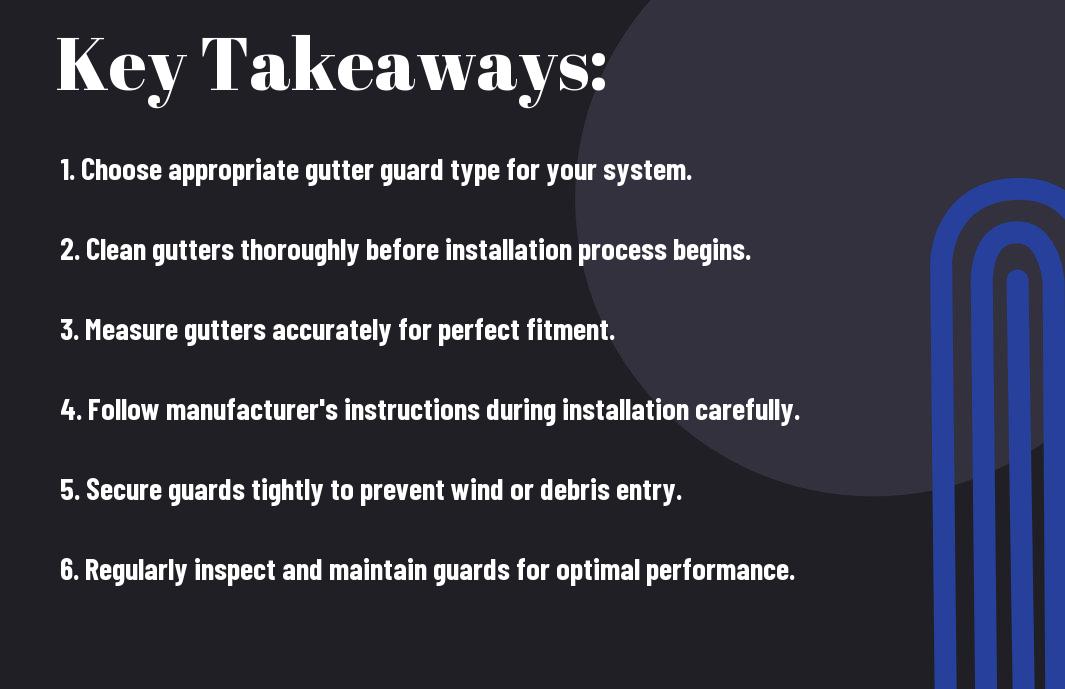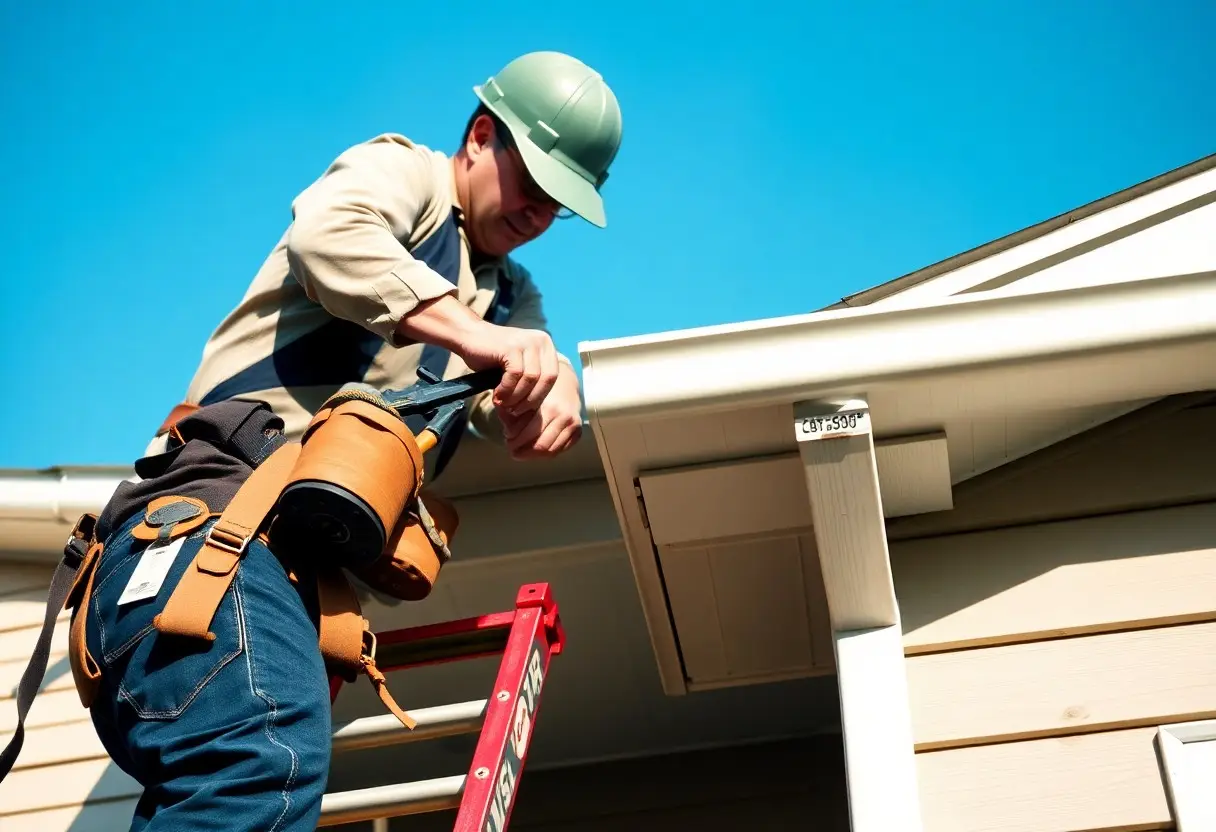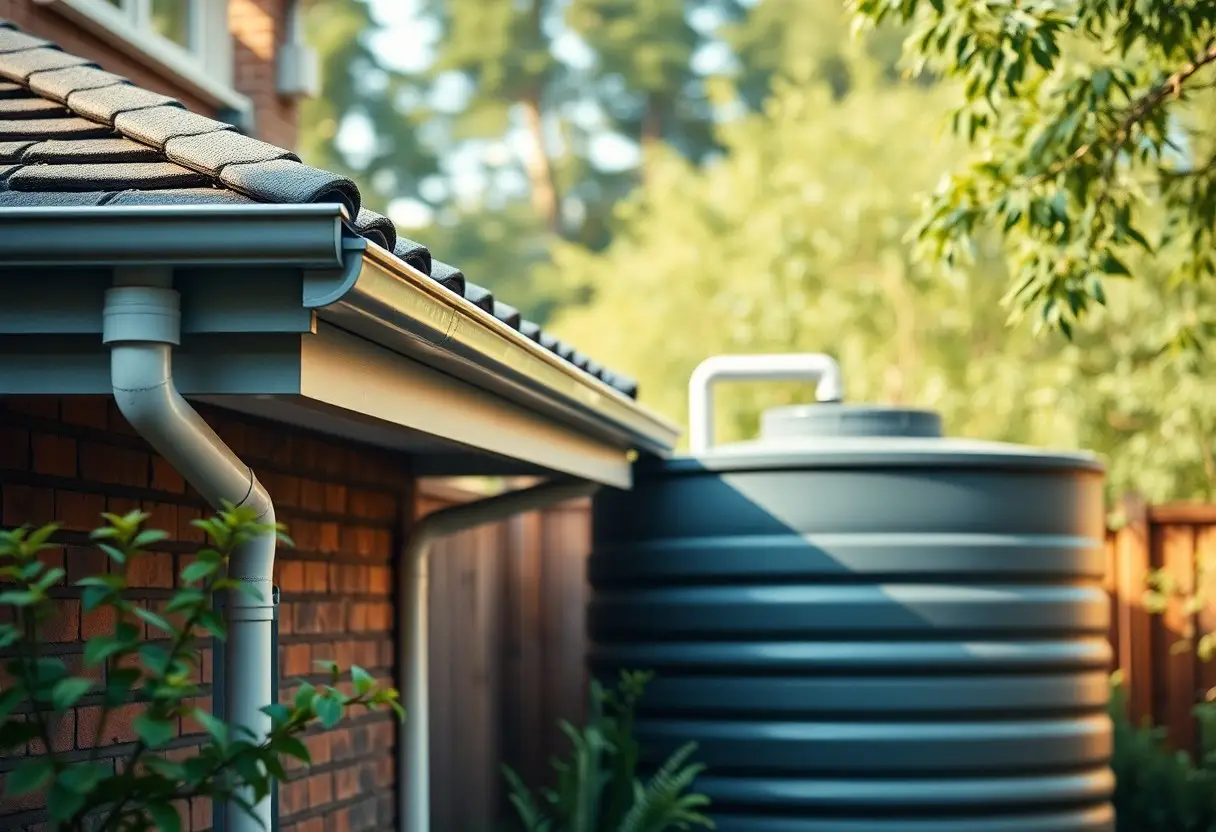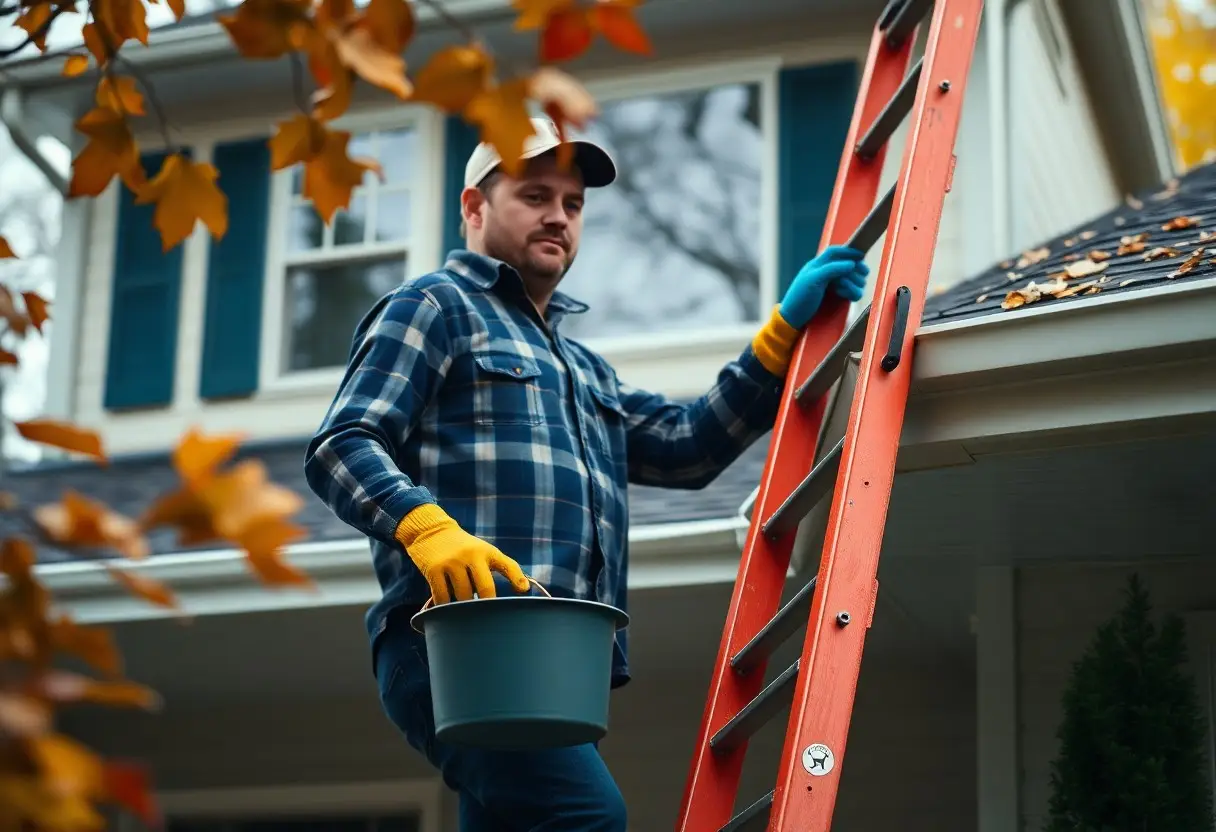Most homeowners face the challenge of maintaining clean gutters, as clogged gutters can lead to serious water damage and costly repairs. Installing gutter guards is an effective solution to prevent debris accumulation while simplifying your maintenance routine. In this guide, you will learn the imperative steps to successfully install gutter guards, ensuring protection for your home and enhancing its durability. By taking this proactive measure, you can enjoy long-lasting gutters without the hassle of frequent cleaning.
Key Takeaways:
- Choose the right type of gutter guard that best suits your home’s needs and local weather conditions to ensure optimal performance.
- Thoroughly clean and inspect gutters before installation to prevent existing debris from causing blockages under the new gutter guards.
- Follow the manufacturer’s instructions carefully during installation for the best results and to maintain your warranty coverage.
Understanding Gutter Guards
For homeowners looking to prevent debris buildup, gutter guards are an crucial component of effective drainage systems. They function as protective filters, ensuring that leaves, twigs, and other materials do not clog your gutters, promoting a seamless flow of rainwater away from your property’s foundation. By investing in gutter guards, you not only save time on maintenance but also extend the lifespan of your gutters.
Types of Gutter Guards
Against the myriad of options available, selecting the right type of gutter guard can significantly impact your home’s drainage efficiency. Here’s a quick breakdown of popular types:
| Mesh | Effective for keeping out small debris while allowing water to flow through. |
| Screen | Simple design that filters larger debris, typically cost-effective. |
| Reverse Curve | Designed to direct water downward while blocking debris on the surface. |
| Foam | Fits directly into the gutter, allowing water to filter through while catching debris. |
| Hybrid | Combines different materials for optimized performance and versatility. |
The choice of gutter guard will depend on your specific needs and location.
Benefits of Installing Gutter Guards
One of the primary benefits of installing gutter guards is the significant reduction in maintenance efforts. With guards in place, you minimize the frequency of cleaning your gutters, which can be both time-consuming and hazardous. Additionally, gutter guards help prevent water damage to your home by ensuring proper water flow away from your foundation.
Installing gutter guards is a smart decision for any homeowner aiming to improve their home’s drainage system. By effectively keeping out leaves, twigs, and other debris, you greatly reduce the risk of clogs, which can lead to costly water damage and structural issues. Moreover, guards lessen the likelihood of pests finding a home in your gutters, offering a safer environment. With less debris buildup, the lifespan of your gutters is increased, along with your peace of mind knowing that your property is better protected against potential water-related issues.

Tools and Materials Needed
Assuming you have made the decision to install gutter guards, it’s important to gather the right tools and materials before you start. This preparation ensures a smooth installation process and helps you avoid unnecessary delays. From safety gear to specific gutter guard types, being well-equipped will enhance your efficiency and effectiveness in preventing clogs.
Essential Tools
Around the house, you’ll find some important tools needed for the installation. Start with a ladder, safety goggles, a drill, and a screwdriver. You may also want to use a measuring tape, a level, and a trowel for any debris removal. Having these items on hand will make your gutter guard installation a breeze.
Required Materials
Required materials include various types of gutter guards, screws, and possibly adhesive for installation, depending on the guard type you select. Choose high-quality materials that can withstand harsh weather conditions to maximize effectiveness.
Materials you’ll need also feature different styles of gutter guards such as mesh, reverse curve, or brush types, depending on your specific needs. Ensure you have the right fasteners that can hold your guards securely in place, as this will help prevent any unwanted dislodging during heavy rains. Investing in quality adhesive can provide an additional layer of security, especially in windy areas. This thoughtful selection of materials will greatly enhance your overall system’s longevity and performance.
Preparing for Installation
Once again, before you begin installing gutter guards, it’s important to gather all necessary tools and materials. This includes your chosen gutter guards, a ladder, safety equipment, and a cleaning kit for your gutters. Ensuring you have everything at hand will streamline the installation process and make it significantly more efficient.
Safety Precautions
Installation requires careful attention to safety measures. Always use a sturdy ladder; ensure it’s placed on level ground and secured properly. Donning a hard hat and gloves can protect you from falling debris or sharp objects while working. Having a buddy nearby can provide assistance if needed, making your work environment safer.
Assessing Your Gutters
Installation begins with a thorough assessment of your existing gutters. You should look for any signs of damage, such as rust spots, leaks, or sagging sections that may require repairs before fitting the gutter guards. This step is imperative to ensure that your guards will function effectively and provide long-lasting protection.
Also, when assessing your gutters, check for proper drainage and ensure that they are free from debris. Identify any blockages that could hinder water flow. Addressing these issues will not only enhance the performance of your gutter guards but also prolong the lifespan of your gutter system overall. Regular maintenance is key to avoiding costly repairs in the future.
Step-by-Step Installation Guide
Despite the seemingly daunting task of installing gutter guards, following a systematic approach can make the process manageable and effective. These steps will guide you through the installation, ensuring your gutters stay clean and free from clogs.
| Step | Action |
|---|---|
| 1 | Gather necessary materials and tools. |
| 2 | Clean existing gutters of debris. |
| 3 | Measure gutter lengths for guard sizing. |
| 4 | Cut the gutter guards to fit appropriately. |
| 5 | Secure the guards in place according to type. |
Cleaning Existing Gutters
StepbyStep, you should begin by removing leaves and any other debris from your gutters to ensure optimal performance. A clean surface is necessary for proper adhesion and to prevent any future clogs.
Installing Different Types of Gutter Guards
Installing various types of gutter guards may require specific techniques depending on their design. Let’s break down the different types and general installation methods.
- Mesh guards work well for fine debris.
- Reverse curve guards direct water into the gutter.
- Screen guards are easy to install.
- Solid surface guards may be more expensive.
- Brush guards prevent large debris.
This will help you choose the right fit for your gutters.
| Type of Guard | Description |
|---|---|
| Mesh | Prevents small debris from entering gutters. |
| Reverse Curve | Requires angled attachment; redirects rainwater down. |
| Screen | Simple and effective; easy to install. |
| Solid Surface | Integrates with roof and offers excellent performance. |
| Brush | Designed to trap debris while allowing water flow. |
At this point, you’ll want to ensure you’re choosing the right type of gutter guard that fits your specific needs. Each type has its pros and cons, making it important to evaluate based on your home’s requirements.
- Assess your home environment for the best fit.
- Determine installation complexity for your skills.
- Consider budget constraints before purchasing.
- Check local regulations related to installations.
- Evaluate ongoing maintenance requirements for different guards.
This will help you make an informed decision on your gutter guard selection.

Maintenance After Installation
Keep your gutter guards effective by establishing a regular maintenance routine. Regular upkeep ensures that clogs are minimized and your gutters perform efficiently throughout the year.
Regular Inspections
An important part of maintenance is conducting regular inspections. Check your gutter guards every season for any signs of debris accumulation or damage. It’s best to address issues early to avoid costly repairs down the line.
Cleaning Tips for Longevity
On a well-maintained gutter guard system, occasional cleaning is necessary to ensure optimal performance. Follow these tips to prolong the life of your gutter guards:
- Clear away leaves and debris from the surface.
- Use a gentle brush to scrub the guards without causing damage.
- Rinse thoroughly with a garden hose to flush out any remaining dirt.
Knowing how to clean your gutter guards will not only enhance their efficiency but also extend their lifespan.
Indeed, regular cleaning of your gutter guards can greatly impact their effectiveness. Here are additional points to enhance your cleaning routine:
- Check the downspouts for blockages during your cleaning.
- Inspect for any wear and tear that could require replacement.
- Consider using professional services if the job feels unsafe.
Knowing the best techniques and safety protocols for cleaning will ensure that you keep your gutter guards functioning optimally.
Troubleshooting Common Issues
Your installation of gutter guards may occasionally present challenges. Issues such as water pooling, insufficient debris protection, or sections coming loose can hinder their effectiveness. By understanding these common problems, you can ensure your gutter guards perform optimally and protect your home from water damage.
Identifying Installation Problems
Common signs of installation problems include water overflow during storms, visible debris accumulation, and gaps between the guard and the gutter. If you notice these issues, it’s crucial to assess your installation carefully to pinpoint the cause.
Solutions to Common Clog Issues
The best way to tackle clog issues is to conduct regular inspections and cleanings. Ensure your gutter guards are properly aligned, and consider adjusting their position for optimal performance.
Another effective strategy is to install additional features such as leaf blowers or pressure washers that can help keep your gutters clear between cleanings. Additionally, investing in high-quality gutter guards with a fine mesh can vastly improve their ability to filter out debris and prevent clogs. Implementing these solutions can enhance the durability of your system and ultimately lead to long-term peace of mind regarding water management.
Can Installing Gutter Guards Improve the Efficiency of My Rain Water Harvesting System?
Installing gutter guards can significantly enhance the efficiency of your rainwater harvesting system. By preventing debris buildup, these guards ensure a clear flow of rainwater into your collection tanks. This not only maximizes the volume of water captured but also minimizes maintenance, making it easier to install a rainwater harvesting system successfully.
To wrap up
Following this guide on how to install gutter guards, you can effectively prevent clogs in your gutters. By choosing the right type of gutter guard and ensuring proper installation, you will protect your home from water damage and reduce maintenance chores. Make sure to regularly inspect your guards to maintain their effectiveness, and enjoy peace of mind knowing your gutters are working efficiently.
FAQ
Q: What are gutter guards and how do they help prevent clogs?
A: Gutter guards are protective coverings that are installed over your gutter system to prevent debris like leaves, twigs, and dirt from entering the gutters while allowing rainwater to flow through. By keeping out this debris, gutter guards significantly reduce the chances of clogs, which can lead to overflow, water damage, and even structural issues in your home.
Q: What tools and materials do I need for installing gutter guards?
A: To install gutter guards, you will typically need the following tools and materials: gutter guards specific to your gutter style, a ladder, a tape measure, a utility knife, a power drill, screws, and possibly a silicone sealant for added protection against leaks. It’s also advisable to have gloves for safety and a tarp for catching any debris that may fall during the installation process.
Q: How do I ensure proper installation of gutter guards for maximum effectiveness?
A: To ensure proper installation of gutter guards, start by cleaning your gutters thoroughly to remove any existing debris. Measure the length of your gutters and cut the guards to fit, leaving some overlap at the seams. Secure the guards according to the manufacturer’s instructions, ensuring that they are tightly fitted but not obstructing water flow. Additionally, check for any low spots in the gutters where water may pool, and make adjustments as necessary to promote proper drainage.


